A Catholic theology of statues
Recently, statues have been a flashpoint in American public life. In Charlottesville and in many other cities around the country, statues of public figures have been the center of debates about how our history is remembered, preserved, and honored. The Church’s history has not been exempt from these discussions; there have been multiple incidents in the past few months where prominent statues of Catholic saints have been vandalized or broken. Given this uptick of religious iconoclasm, it is worth revisiting the rich tradition of sacred images in the Catholic Church.
Iconoclasts throughout Christian history have pointed towards the Ten Commandments for justification, particularly Exodus 20:4:
“You shall not make for yourself a graven image, or any likeness of anything that is in heaven above, or that is in the earth beneath, or that is in the water under the earth.”
However, the Scriptural view of sacred images is not so clear-cut. In the book of Numbers, God commands Moses to make a serpent out of bronze, and those that look upon the serpent are healed. Additionally, in Exodus and 1 Kings, Moses and Solomon create statues of various angels, animals, and other objects for the Ark of the Covenant and the Temple furnishings. So the commandment to not make any graven images is nuanced. God Himself seems to command the Jews to violate one of His commandments. However, these images in the Temple and on the Ark are not idols. They are not sacred into of themselves, nor are they intended to be the object of worship, unlike, for example, the Golden Calf.
In the early Church, attitudes towards statues and other sacred images were largely shaped by the revolutionary nature of the Incarnation. As St. John Damascene writes in On Holy Images, “Previously God … absolutely could not be represented by an image. But now that He has made Himself visible in the flesh and has lived with men, I can make an image of what I have seen of God.”
At first, Christian art and imagery was only present in the hidden catacombs of the martyrs. However, as the Roman persecutions ceased and the Church could be more open, her sacred art became more prominent and widespread. Nowhere is this more notable than the altar cross: at first, most churches placed an image of a lamb above their altars. Crucifixes began to be used no later than the Second Council of Tours (c. 567), and by the Synod of Trullo (c. 692) they were a required centerpiece. These primary images of Christ’s Passion, and others like them, were not intended to be objects of worship. Instead, they helped the faithful to call to mind the very real Person who suffered and died for them, truly made present again through the Mass.
The tradition of using statues to commemorate holy figures continued to develop throughout Church history. As early as 324, Eusebius writes how “the likenesses of His apostles Paul and Peter … are preserved in paintings, the ancients being accustomed … according to a habit of the Gentiles, to pay this kind of honor indiscriminately to those regarded by them as deliverers.”
By the 1400s, images and statues of saints had a firmly established place in the rituals and liturgy of the Church, and most notably the practice of Marian processions developed during this time. In addition, the late Middle Ages saw the rise of Protestantism and an accompanying resurgence of iconoclasm. In response, the Council of Trent reaffirmed the Catholic tradition: “not that any divinity or power is thought to be in [statues] for the sake of which they may be worshipped … but because the honor shown to them is referred to the prototypes [persons] which they represent.”
The importance of statues and sacred imagery to the Catholic Church continues up to the present day. In particular, the altar crucifix has served as a reference point for the “direction” of the Mass, for both priests and the laity. Pope Benedict XVI writes in his Spirit of the Liturgy, “the cross can serve as the interior ‘east’ of faith. It should stand in the middle of the altar and be the common point of focus for both priest and praying community.” On Notre Dame’s campus alone there are many images, most notably in the Basilica and at the Grotto, and for good reason. These statues serve as a constant reminder of those who have gone before us in faith, whose example we are to follow, and who continue to intercede for us in Heaven above.
This article was brought to you by the Theology Club’s Zossima Project: Making prayer an education. For a complete works cited, please email zossimaprojectnd@nd.edu. Thank you for your readership.
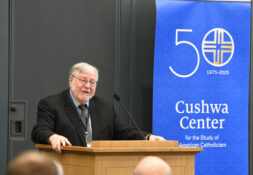
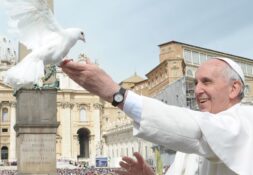
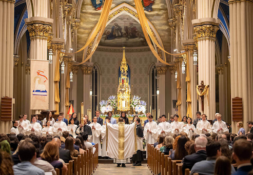
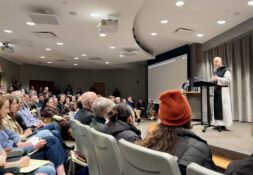
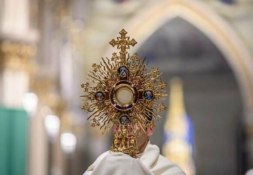

Leave a Reply